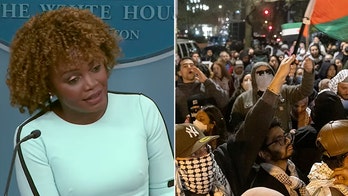Diagnosing Immigrants Students with PTSD
High levels of violence along the US-Mexico border leave immigrant youth suffering from post-traumatic stress disorder.
El Paso, Texas – Two years ago, Alan García was driving down a busy street with a friend in Juárez when a black van stopped in front of them. Armed men emerged and ordered them out of the car.
The men put guns to the teenagers’ heads and ordered them to turn over their keys, their wallets, and cell phones. For Juárez, it may have been just another carjacking, but for García – who was not injured -- it was a night that left an indelible mark on his psyche.
The experience added to the memories of an incident where García saw a vehicle pulled over by armed gunmen who shot the occupants in the head on the side of the road.
"I was traumatized, I never talked to anyone about it,” García, now 17, said. “It looked like a planned assassination.”
García, a senior at Cathedral High School, carries the emotional scars increasingly found in immigrant children who have been exposed to the violence that has defined Mexico most of their lives. They suffer Post Traumatic Stress Disorder, experts say, but many educators in the United States are not prepared to recognize in these children the condition most commonly associated with combat veterans.
Mental health and judicial experts say that children from Mexico attending schools in the U.S. can be just as vulnerable to PTSD after being exposed to beheadings, mutilated bodies lying by their schools or hanging from highway overpasses, gun fights, family and friends murdered or disappeared, or having actually been victims themselves. The toll may be an unexplored explanation for truancy, behavioral issues, poor academic performance, and inability to concentrate in class.
Two thirds of my class of 35 young men cross the border daily and many have seen the violence firsthand or know someone who was a victim.
"The violence in Mexico greatly increases the risk of PTSD among children there," said Christina Sobin, associate professor of psychology at the University of Texas at El Paso.
García is among more than 2,000 students that either live in Juárez and cross into El Paso for school each day, or who have fled the violence with their families and now live in the Texas city.
In the months following that carjacking, García’s grades plummeted. He found himself argumentative and getting into fights. Sometimes he just opted for avoiding people altogether because they “annoyed” him.
García and his classmates know the toll of the violence in Juárez all too well. In February of 2011, two Cathedral students were shot dead at a Juárez auto dealership.
This is where Richard Barajas stepped in.
The retired Chief Justice of the Texas Court of Appeals launched a course in Victimology at his alma mater to help the students understand and cope with the emotional toll the violence has on Cathedral students.
“Two thirds of my class of 35 young men cross the border daily and many have seen the violence firsthand or know someone who was a victim,” Barajas said. “We also see a number of Anglo students affected emotionally when they hear the stories from classmates and they have never stepped foot in Juárez.”
Both Barajas and Sobin agree that PTSD is present among immigrant children who have experienced violence in some form or another, but the problem is how can educators identify the symptoms and get the student the care they need.
There is an absence of research in the area of PTSD among immigrant children who attend American schools -- and what compounds the difficulty in researching the issue is federal law prohibiting school officials from delving into where a student is from and what they experienced, unless it is voluntarily disclosed by the parents.
Barajas said this culture of silence contributes to a pressure cooker feeling for students who can’t or don’t talk about what they are experiencing – and it all manifests itself into behaviors that stymie educators.
“You can never get to the root of the problem unless there is some kind of intervention,” Barajas said.
With the proliferation of recent immigrants throughout the U.S. -- not only along the U.S.-Mexico border -- there is concern the symptoms of PTSD may be more widespread than presumed.
"Given the high sensitivity and understanding in the border region of the violence in Mexico, it could be the case that children who have migrated to other parts of the country are actually far more at risk of undiagnosed violence-related disorders because of the relative lack of understanding regarding what they might have experienced," Sobin said.
Sobin believes that teachers cannot be expected to make a clinical diagnosis of PTSD, but working closely with trained counselors, psychologists, or mental health clinics, they can serve as gatekeepers by being aware of the symptoms.
This would allow teachers the opportunity to see that when a child misbehaves, withdraws or behaves in unexpected ways in the classroom, it is not simply misbehavior.
"Any child who does not receive help for severe emotional or behavioral distress is at high risk of school failure, or at the very least, underachievement," Sobin said. "The goal has to be support rather than punishment."





